April 29 to May 5
One month before the Taipei-Keelung New Road (北基新路) was set to open, the news that US general Douglas MacArthur had died, reached Taiwan.
The military leader saw Taiwan as an “unsinkable aircraft carrier” that was of huge strategic value to the US. He’d been a proponent of keeping it out of Chinese Communist Party (CCP) hands. Coupled with the fact that the US had funded more than 50 percent of the road’s construction costs, the authorities at the last minute renamed it the MacArthur Thruway (麥帥公路) for his “great contributions to the free world and deep friendship toward the citizens of the ROC (Republic of China),” according to a Highway Bureau report from 1966.
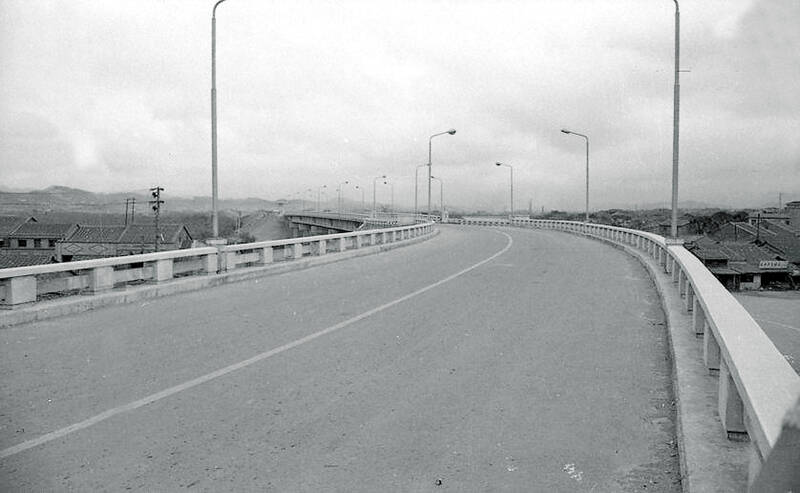
Photo courtesy of Academia Historica
After Roosevelt Road, it was the second, and last road in Taiwan to be named after a foreigner.
Inaugurated on May 2, 1964 to great fanfare, the two-lane, controlled-access highway was the first of its kind in Taiwan, cutting down travel time between Taipei and Keelung from 45 minutes to 25 minutes. Only cars, buses and trucks were allowed, and the speed limit was 100km per hour in the plains and 80km per hour in the hills.
Drivers paid a small toll to enter, and were handed a “time card” that was manually checked at the exit to see if they had been speeding.
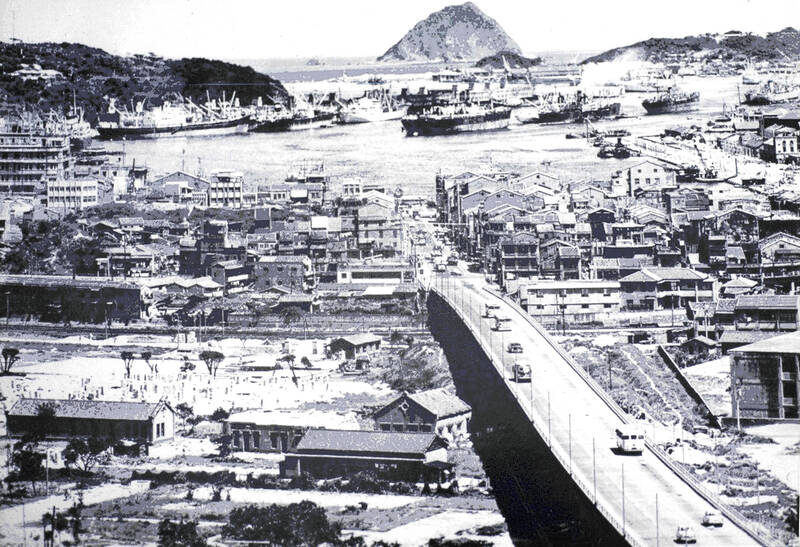
Photo courtesy of Taiwan Cultural Memory Bank
A Central News Agency report states that the design and construction were subpar, leading to 51 accidents during the first two years of operation. The lanes were less than eight meters wide and lacked a median, making it prone to head-on collisions. Motorcycles often snuck onto the road, and there were also several landslides.
Most of the thruway was incorporated into Freeway No. 1 in 1977, with the remaining 2km becoming today’s Nanjing E Road Section 6. Traces of the original path can still be identified, such as the Jhongsing Tunnel (中興隧道) and other landmarks that remain of interest.
CONNECTING CITIES
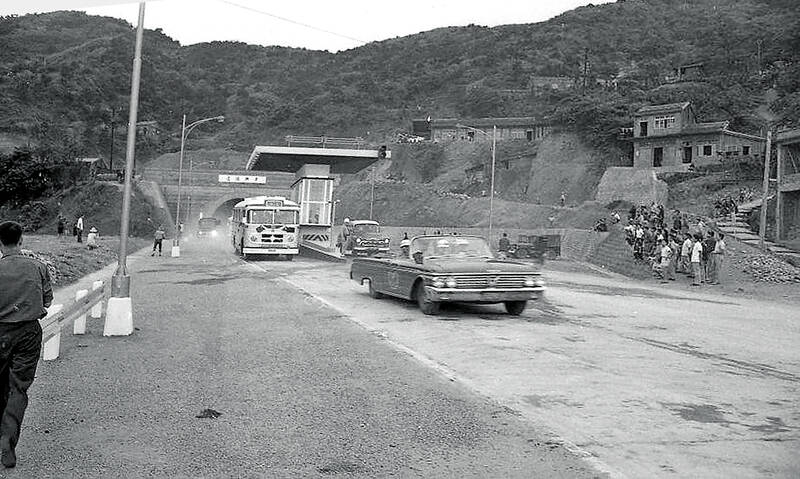
Photo courtesy of Academia Historica
The 1966 Construction Report on the MacArthur Highway (麥克阿瑟公路施工報告) indicates that the Highway Bureau in 1958 planned four major arteries connecting Taipei with the surrounding areas of Beitou, Sinjhuang (新莊), Sindian (新店) and Keelung to improve traffic and economic development. These roads were also meant to help with evacuation in case of airstrikes. However, the government did not have sufficient funding to carry out these projects.
The first priority was the Taipei-Keelung route, as it would expedite transport between the capital and the largest port in northern Taiwan. Although the nation’s heavy industry centered in the south, light industry factories had sprung up along the Japanese-built highway (today’s Provincial Highway 5) between the two cities. With the surge in industrial activity, the mixed-use pathway was becoming congested and dangerous — statistics show that 4,200 cars, motorcycles, bicycles and handcarts traversed it per day in 1959. The situation would only worsen with the planned completion of the Lioudu Industry Park (六堵工業區) in 1965.
Instead of expanding the original highway on the southern bank of the Keelung River, a new expressway was planned on the northern side in case one road was destroyed during military conflict. Surveying began in February 1959, and the first proposed route had 86 bends, a number that was later reduced to 17.
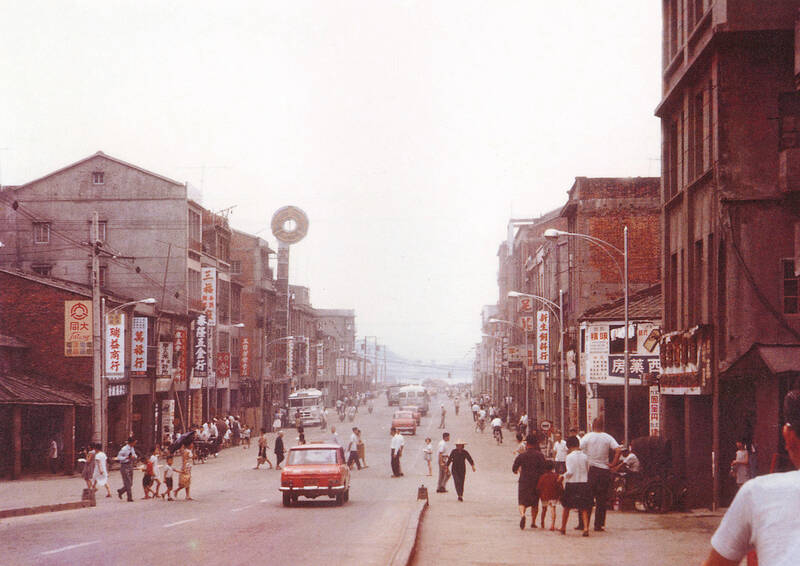
Photo courtesy of Keelung City Cultural Affairs Bureau
The thruway was originally named the Taipei-Keelung Second Road (北基二路), which was updated to Taipei-Keelung New Road (北基新路) before the final name change to honor MacArthur.
The final budget was set at NT$227.9 million, with NT$126.95 million of it coming from US aid. The 23.4km-long route began at Nanjing E Road Section 4 next to the Taipei Arena today, and ended in downtown Keelung. Unlike today, reports stated that sections 4 and 5 of Nanjing E Road did not see much traffic then, and much of the first part of the road in Taipei was still farmland.
DANGER ROAD
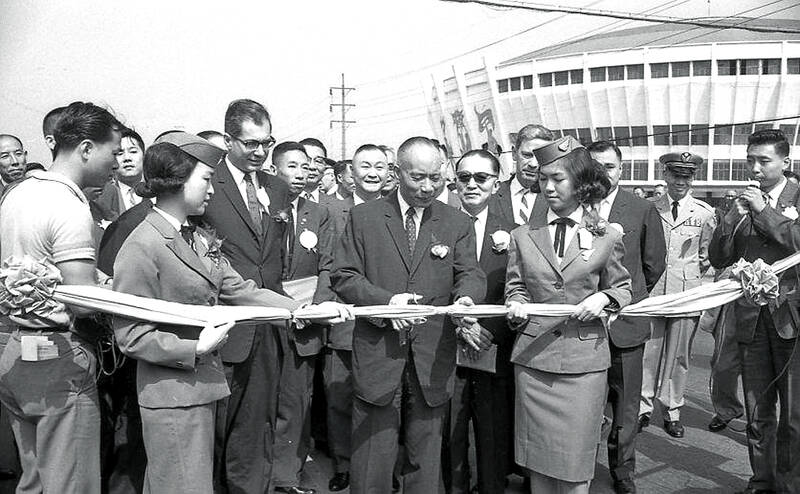
Photo courtesy of Academia Historica
The MacArthur Thruway took three years to complete with limited resources and crew members, and the 1966 report details the myriad challenges and ways they had to adapt on the fly. There was one fatality — excavator operator Chiang Lun-shun (江倫順) died in an accident while digging through one of the most difficult mountain sections right before Lioudu.
The report’s review section admits to hurriedly starting before they were fully ready due to funding restrictions, leading to miscalculations in the machinery and materials required. The road’s surface was already damaged on the first day as it could not handle the high traffic.
But the bigger problem was the accidents that killed or injured more than 200 people by 1966. In 1968, a taxi swerved on a wet road and collided with another taxi head on, leading to four dead and six injured.
There were no barriers on the side, and in 1968, one car fell into the ravine below. The tow truck that came to help extricate it failed to put up warning lights and an incoming truck slammed into it, leading to a multi-car accident.
According to research done by the Taiwan Highway Club, in addition to Nanjing E Rd Section 6, parts of Kangning Street (康寧路) in Sihjih District (汐止) and Shihchien Road Lane 253 (實踐路253巷) in Wudu District (五堵) are remnants from the McArthur Thruway. These two segments were bends that were cut out from the route of Freeway No. 1. Those who want to experience how narrow the thruway was can visit the part of Kangning Street east of today’s Huguang Borough Community Center (湖光里活動中心).
Taiwan in Time, a column about Taiwan’s history that is published every Sunday, spotlights important or interesting events around the nation that either have anniversaries this week or are tied to current events.
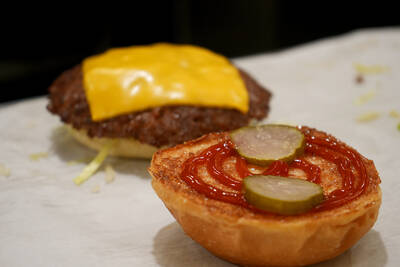
Taiwan can often feel woefully behind on global trends, from fashion to food, and influences can sometimes feel like the last on the metaphorical bandwagon. In the West, suddenly every burger is being smashed and honey has become “hot” and we’re all drinking orange wine. But it took a good while for a smash burger in Taipei to come across my radar. For the uninitiated, a smash burger is, well, a normal burger patty but smashed flat. Originally, I didn’t understand. Surely the best part of a burger is the thick patty with all the juiciness of the beef, the
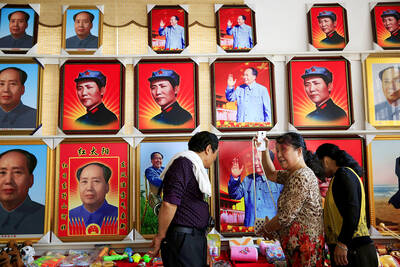
The ultimate goal of the Chinese Communist Party (CCP) is the total and overwhelming domination of everything within the sphere of what it considers China and deems as theirs. All decision-making by the CCP must be understood through that lens. Any decision made is to entrench — or ideally expand that power. They are fiercely hostile to anything that weakens or compromises their control of “China.” By design, they will stop at nothing to ensure that there is no distinction between the CCP and the Chinese nation, people, culture, civilization, religion, economy, property, military or government — they are all subsidiary

This year’s Miss Universe in Thailand has been marred by ugly drama, with allegations of an insult to a beauty queen’s intellect, a walkout by pageant contestants and a tearful tantrum by the host. More than 120 women from across the world have gathered in Thailand, vying to be crowned Miss Universe in a contest considered one of the “big four” of global beauty pageants. But the runup has been dominated by the off-stage antics of the coiffed contestants and their Thai hosts, escalating into a feminist firestorm drawing the attention of Mexico’s president. On Tuesday, Mexican delegate Fatima Bosch staged a
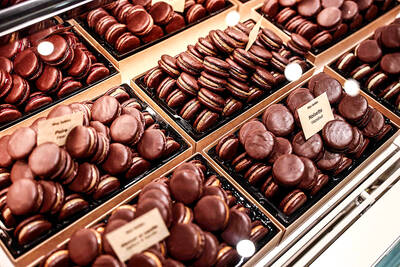
Would you eat lab-grown chocolate? I requested a sample from California Cultured, a Sacramento-based company. Its chocolate, not yet commercially available, is made with techniques that have previously been used to synthesize other bioactive products like certain plant-derived pharmaceuticals for commercial sale. A few days later, it arrives. The morsel, barely bigger than a coffee bean, is supposed to be the flavor equivalent of a 70 percent to 80 percent dark chocolate. I tear open its sealed packet and a chocolatey aroma escapes — so far, so good. I pop it in my mouth. Slightly waxy and distinctly bitter, it boasts those bright,